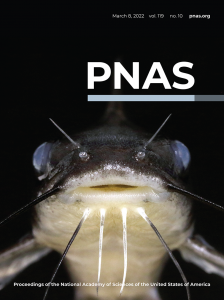When the National Academy of Sciences added an online version of its flagship journal, the Proceedings of the National Academy of Sciences (PNAS), in 1997, the publishing world was quite different. While PNAS was a venerable publication—then in its 94th volume year—online journals were still new, the DOI system had yet to launch, and Atypon was just getting started.
In 2019, PNAS went online-only, and now this highly regarded journal is joining our growing Atypon community!
 Designed by the Atypon Design Studio and built by our Literatum team, the new PNAS.org makes the most of the latest advances in digital publishing and scholarly communications. PNAS on Literatum is more portable, allowing discovery and content browsing on any digital device; more searchable, empowering users to find the content most relevant to them with features such as suggested searches and interdisciplinary/transdisciplinary discovery tools; and more author-friendly, giving authors easy access to usage and citation trends for their articles and easier ways to share their work with colleagues.
Designed by the Atypon Design Studio and built by our Literatum team, the new PNAS.org makes the most of the latest advances in digital publishing and scholarly communications. PNAS on Literatum is more portable, allowing discovery and content browsing on any digital device; more searchable, empowering users to find the content most relevant to them with features such as suggested searches and interdisciplinary/transdisciplinary discovery tools; and more author-friendly, giving authors easy access to usage and citation trends for their articles and easier ways to share their work with colleagues.
In addition, the new PNAS site unites journal content with content from the Journal Club blog and Science Sessions podcast, each of which was previously hosted separately elsewhere. This means visitors can now discover and engage with all PNAS content that’s relevant to them, on one integrated platform, regardless of format.
 The redesigned site offers a better user experience for a larger and much more diverse author and reader population than ever before! Readers now see their desired content front and center, and can personalize their interactions with PNAS; the new site follows industry-standard accessibility best practices—including enhanced figure views, higher-resolution images and improved zoom capabilities, alt text, and attention to color contrast and typography for accessibility. And the new PNAS is more accommodating, recognizing the diversity of reader and author communities, both old and new.
The redesigned site offers a better user experience for a larger and much more diverse author and reader population than ever before! Readers now see their desired content front and center, and can personalize their interactions with PNAS; the new site follows industry-standard accessibility best practices—including enhanced figure views, higher-resolution images and improved zoom capabilities, alt text, and attention to color contrast and typography for accessibility. And the new PNAS is more accommodating, recognizing the diversity of reader and author communities, both old and new.
As the journal begins its 119th volume year, this new site is part of a larger project to launch PNAS into the future—a project that began in 2019 and includes new branding and significant investment.
 PNAS continues to look for new ways to make science more accessible for readers and publication easier for researchers, across scientific disciplines and around the world. With this rebrand, which emphasizes their multi-disciplinary, inclusive approach to publishing, PNAS welcomes a global and diverse audience to visit the new PNAS.org and embrace the journal’s future as an accessible and inclusive publication!
PNAS continues to look for new ways to make science more accessible for readers and publication easier for researchers, across scientific disciplines and around the world. With this rebrand, which emphasizes their multi-disciplinary, inclusive approach to publishing, PNAS welcomes a global and diverse audience to visit the new PNAS.org and embrace the journal’s future as an accessible and inclusive publication!
Welcome to Atypon, PNAS! We look forward to the perspectives you’ll bring to our community of peers!






